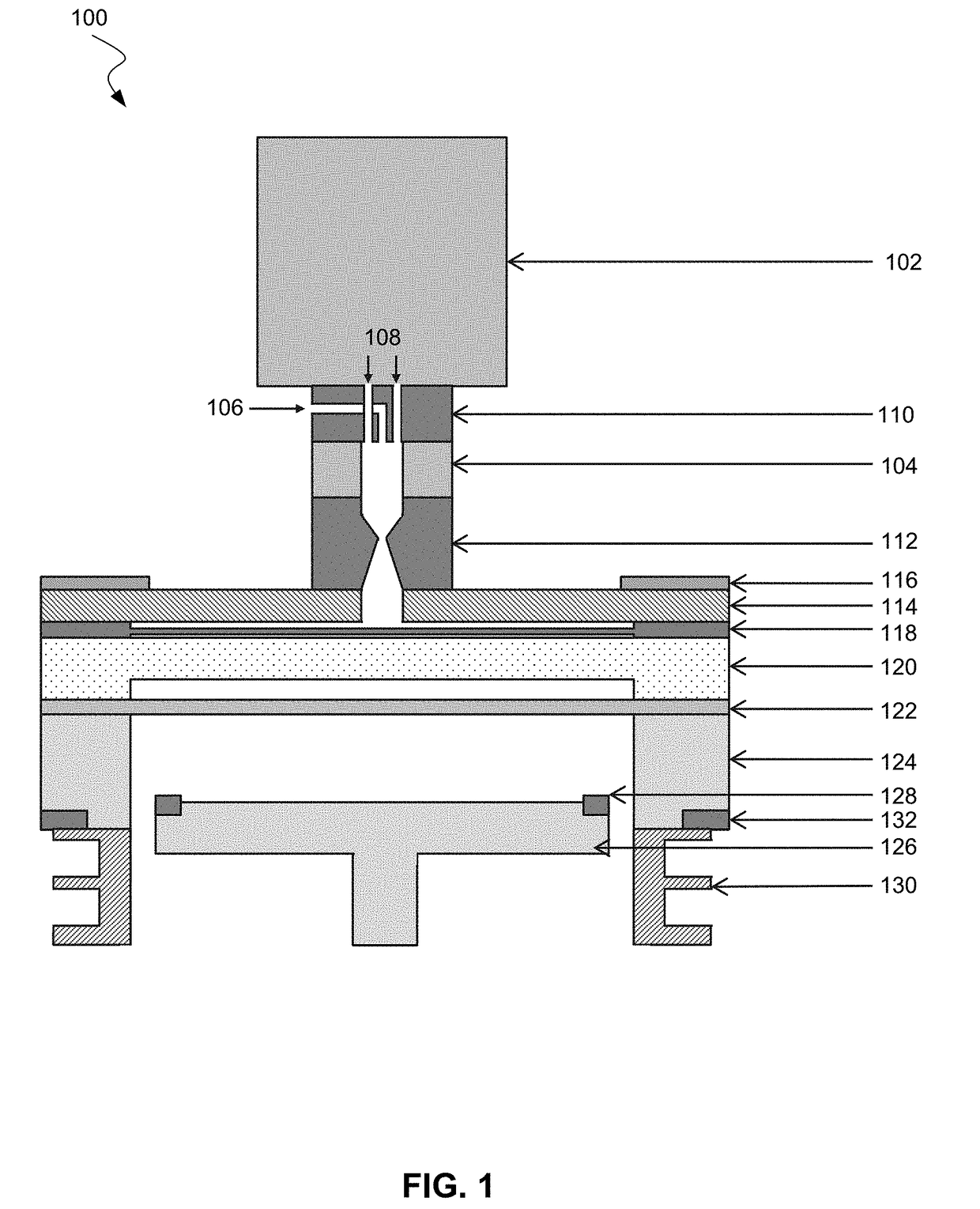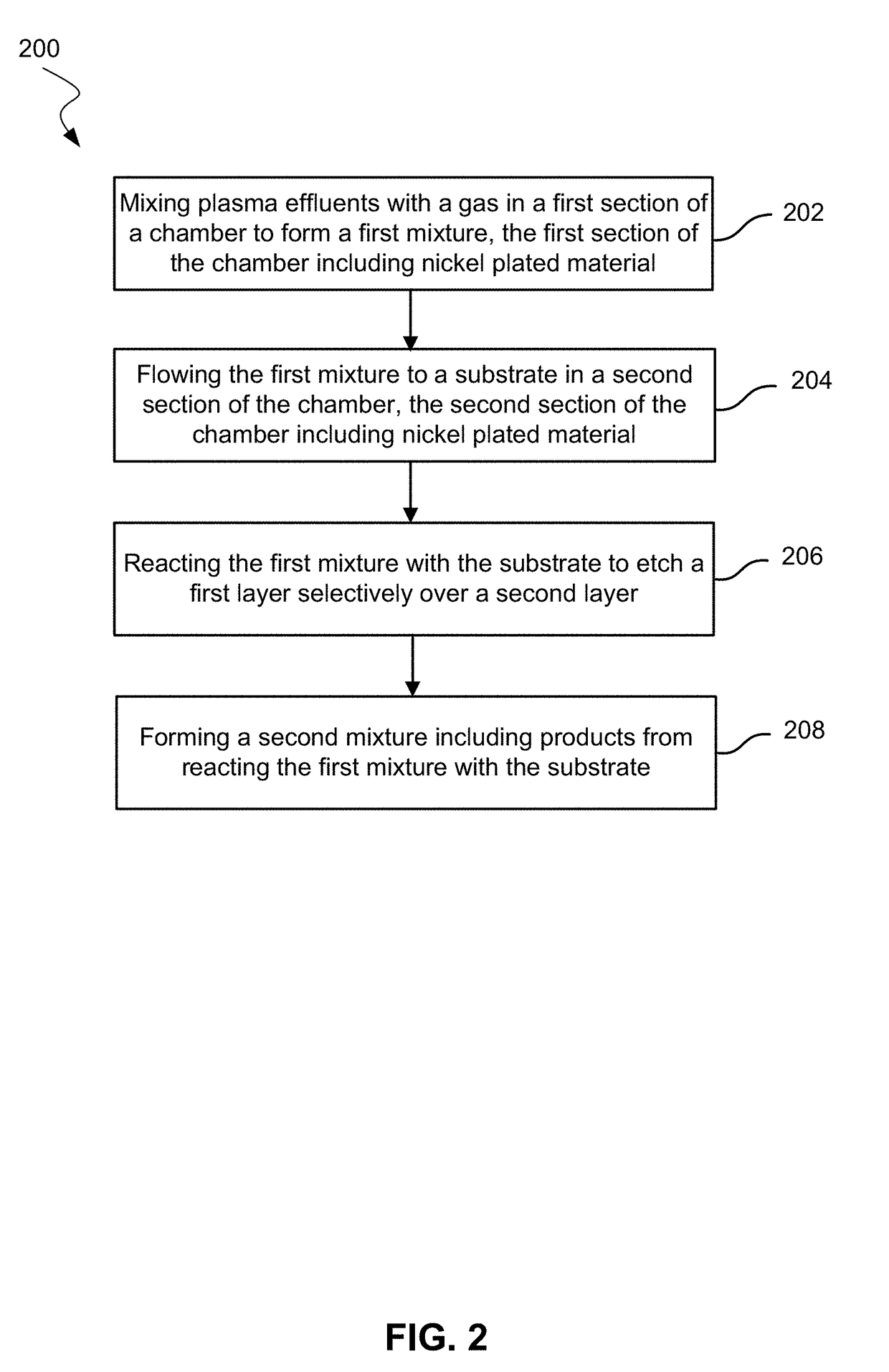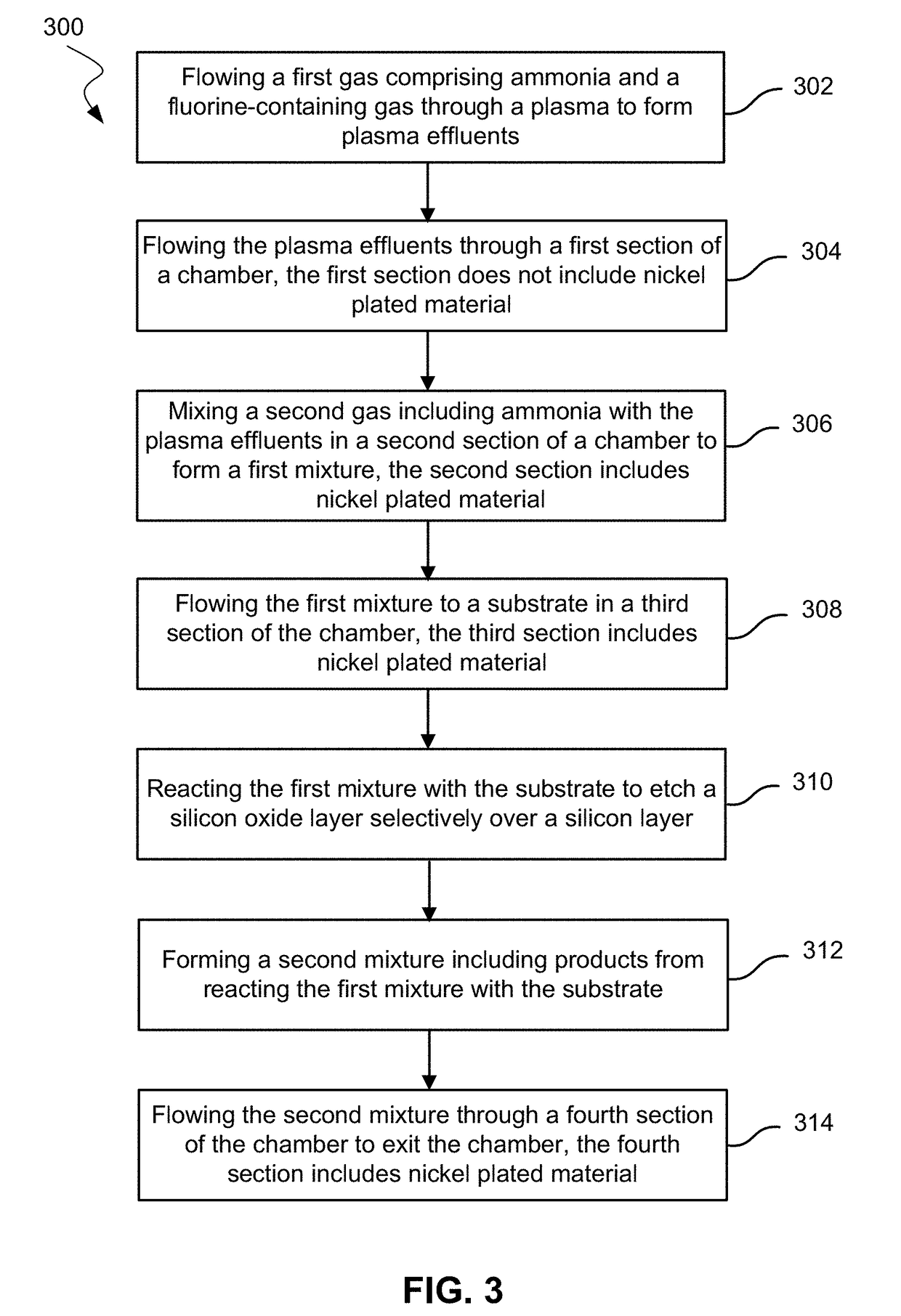Process window widening using coated parts in plasma etch processes
a plasma etching and process window technology, applied in the direction of basic electric elements, electrical equipment, electric discharge tubes, etc., can solve the problems of difficult to define small features and difficulty in patterning these devices, and achieve the effect of improving the patterning process, reducing the size, and reducing the difficulty of defining small features
- Summary
- Abstract
- Description
- Claims
- Application Information
AI Technical Summary
Benefits of technology
Problems solved by technology
Method used
Image
Examples
Embodiment Construction
[0020]Conventional systems and methods for etching silicon oxide may not be suited for low pressures. Low pressures may be preferable for smaller and deeper semiconductor features. However, at lower pressures, etch selectivity may decrease. For example, during the etch of thermal oxide at lower pressures, the etch amount of thermal oxide may decrease, while the etch amount of silicon may increase. At low pressures, the density of reactive components, such as radicals, decreases. As a result, the etch rate of thermal oxide may decrease. Unreacted or incompletely reacted species may also be present in the chamber. At lower pressures, these unreacted species (e.g., fluorine radicals or hydrogen radicals) may react with silicon in the substrate, increasing the etch rate of silicon. Conventional methods etching at increased chamber pressure in order to react the radicals with the substrate or other gaseous species.
[0021]Embodiments of the present technology may allow for low pressure etc...
PUM
 Login to View More
Login to View More Abstract
Description
Claims
Application Information
 Login to View More
Login to View More - R&D
- Intellectual Property
- Life Sciences
- Materials
- Tech Scout
- Unparalleled Data Quality
- Higher Quality Content
- 60% Fewer Hallucinations
Browse by: Latest US Patents, China's latest patents, Technical Efficacy Thesaurus, Application Domain, Technology Topic, Popular Technical Reports.
© 2025 PatSnap. All rights reserved.Legal|Privacy policy|Modern Slavery Act Transparency Statement|Sitemap|About US| Contact US: help@patsnap.com



